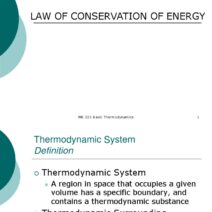Wood energy has long been regarded as a renewable resource, providing essential heat and power in various cultures around the globe. However, the increasing demand for this resource has raised questions about sustainability and environmental impact. Conserving wood energy through sustainable practices is crucial for ensuring a greener future. This article delves into practical strategies, innovative methodologies, and the multifaceted benefits of conscientious wood energy use.
The foundation of conserving wood energy lies in understanding its renewable nature and the cycle of biomass. Trees, when harvested responsibly, can regenerate over time, creating a sustainable energy source. However, conventional practices often neglect the ecological implications of overharvesting. Thus, fostering awareness about sustainable forestry practices is imperative for protecting ecosystems while meeting energy needs.
One effective approach to conserving wood energy is through responsible sourcing. Engaging in certified sustainable forestry initiatives, such as those endorsed by the Forest Stewardship Council (FSC), guarantees that wood is harvested in a manner that maintains the forest’s ecological integrity. When consumers prioritize certified wood products, they encourage manufacturers to adhere to sustainable practices, thus mitigating the risks associated with illegal logging and habitat degradation.
Incorporating innovative wood energy technologies can significantly enhance conservation efforts. Biomass boilers, for instance, convert wood chips and pellets into heat with remarkable efficiency. Unlike traditional coal heating, these systems release fewer greenhouse gases, contributing to overall carbon neutrality. The development of combined heat and power (CHP) systems also offers a dual benefit, maximizing energy efficiency and reducing waste. By utilizing the heat generated during electricity production, these systems epitomize the principles of sustainable energy use.
The cultivation of energy crops specifically for biomass also presents a remarkable opportunity. Growing fast-growing species, such as poplar and willow, in designated energy fields can alleviate pressure on natural forests. These crops can be harvested in short cycles, thus enhancing the availability of wood energy without compromising the local ecosystem. Additionally, employing agroforestry practices, where trees and crops coexist, yields synergistic benefits. The trees provide shade and enhance soil fertility, contributing to a more robust agricultural landscape.
Another salient aspect of wood energy conservation involves consumer behavior. The conscious choice of energy sources can profoundly influence overall consumption patterns. Individuals can mitigate their carbon footprint by opting for wood pellets over fossil fuels. Furthermore, embracing community-supported energy programs fosters local accountability while empowering residents to participate in renewable energy initiatives. It transforms energy consumption from a mere utility into a community-centered practice.
Moreover, the efficiency of wood burning appliances plays a significant role in energy conservation. Traditional wood stoves and fireplaces often suffer from inefficiencies, leading to excess emissions and energy waste. By investing in modern, EPA-certified wood stoves, users can reduce their fuel consumption while ensuring cleaner combustion. Such advancements not only present immediate economic advantages but also catalyze a shift towards sustainability in home heating.
The role of education in promoting sustainable wood energy use cannot be overlooked. Community workshops and outreach programs are pivotal in disseminating knowledge about energy conservation practices. By equipping consumers with information about efficient wood burning techniques, proper maintenance of appliances, and alternatives to combustion, individuals can adopt more responsible energy behaviors. Heightened awareness fosters a collective sense of stewardship, crucial for addressing climate change.
Within the global context, international collaboration holds immense potential in addressing wood energy sustainability. As nations strive to meet renewable energy targets, sharing knowledge and strategies can lead to the establishment of best practices across borders. Developing countries, often rich in forest resources, can benefit from insights derived from industrialized nations. Furthermore, policies that incentivize sustainable forestry could spur economic growth while ensuring environmental conservation.
It is also worth noting the role of technology in enhancing wood energy conservation. Innovations in supply chain transparency, such as blockchain technology, can ensure that wood products are sustainably sourced. This not only bolsters consumer confidence but also promotes accountability among producers. By leveraging technology, the wood energy sector can align itself with sustainable practices and minimize its environmental impact.
As we look towards a greener future, the concept of circular economies embodies a paradigm shift in the utilization of wood energy. Instead of viewing wood as a finite resource, embracing circular principles allows for the recycling and reuse of wood products, thereby extending their lifecycle. Design strategies that prioritize durability, reparability, and recyclability can contribute to reducing waste and optimizing resource utilization. By aligning economic practices with ecological principles, societies can nurture sustainable wood energy systems.
As time progresses, the implications of climate change become increasingly clear. The urgency for sustainable wood energy use serves as a critical focal point in discussions surrounding renewable resources. The effective conservation of wood not only addresses current energy demands but also envisions a future where ecosystems thrive in harmony with human activity. With each responsible action, individuals contribute to a collective legacy of sustainability.
In conclusion, conserving wood energy lies at the intersection of responsibility, innovation, and education. By adopting sustainable practices, prioritizing efficient technologies, and fostering community engagement, society can mitigate the environmental impacts associated with wood consumption. A greener future hinges on conscious decisions made today, wherein each initiative to conserve wood energy becomes a step towards a more sustainable and thriving planet.







